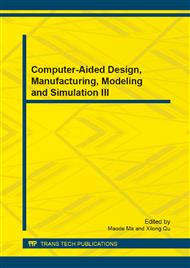p.526
p.531
p.535
p.541
p.546
p.551
p.556
p.561
p.566
The Study on E-Business Authentication Approach in Distributed System
Abstract:
The most important and concerned problem with the Internet electronic registration is security problem. This contribution uses conic curve method to verify the generating license in servers. In order to ensure the validity and security of license, the process of license distribution apply a verifiable code distribution scheme based on conic curve to make the electronic registration process more secure. In this paper, we propose a distributed electronic authentication scheme based on conic curves. As an alternative algebra curve technology, we believe conic deserves the further study in cryptography.
Info:
Periodical:
Pages:
546-550
Citation:
Online since:
October 2013
Authors:
Keywords:
Price:
Сopyright:
© 2014 Trans Tech Publications Ltd. All Rights Reserved
Share:
Citation:


